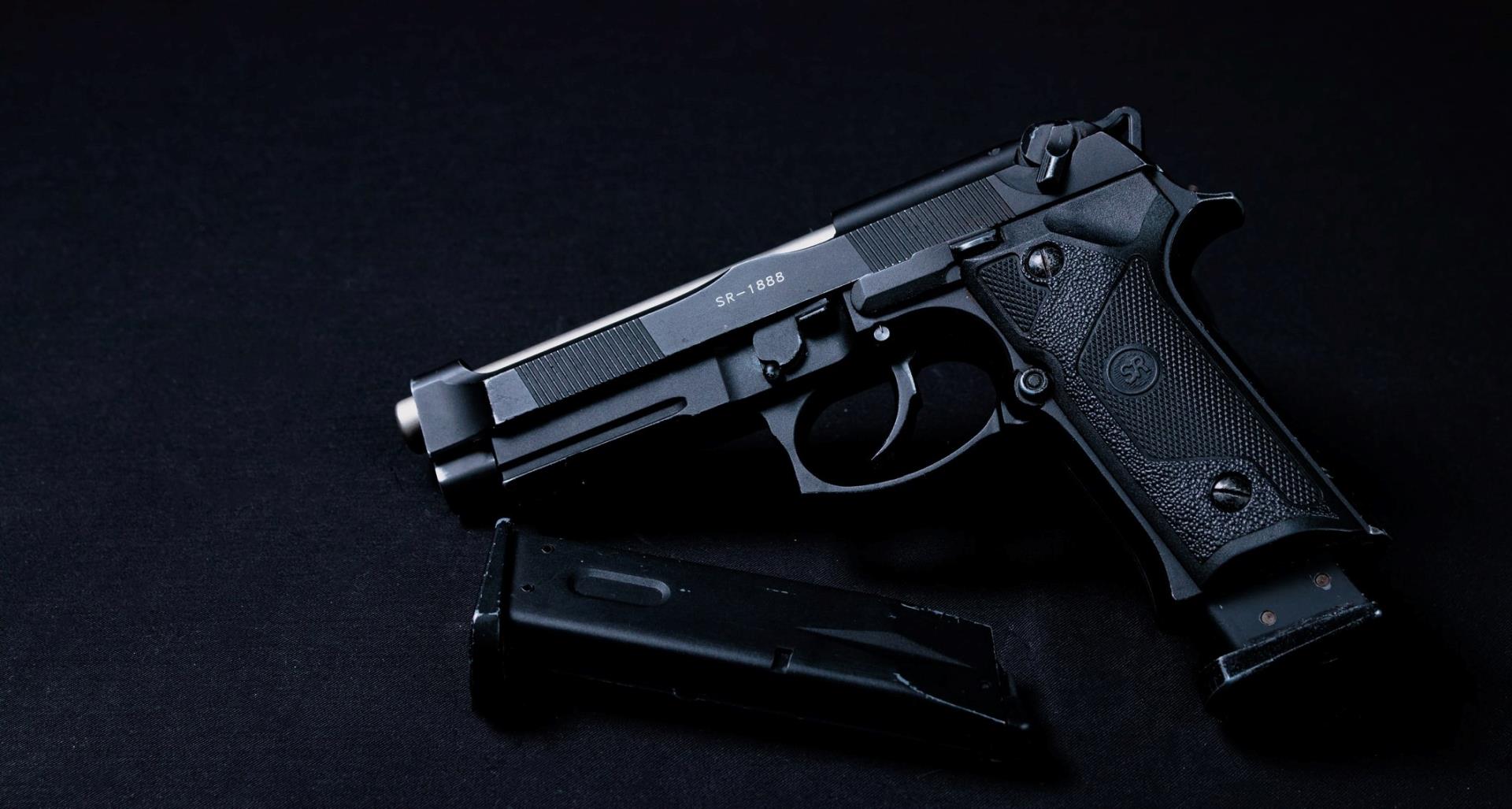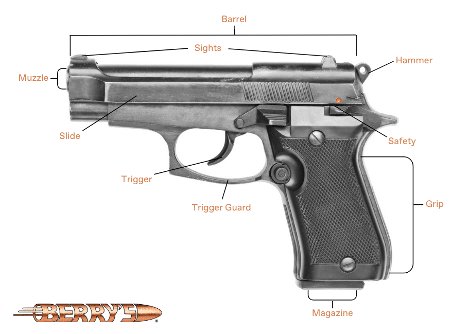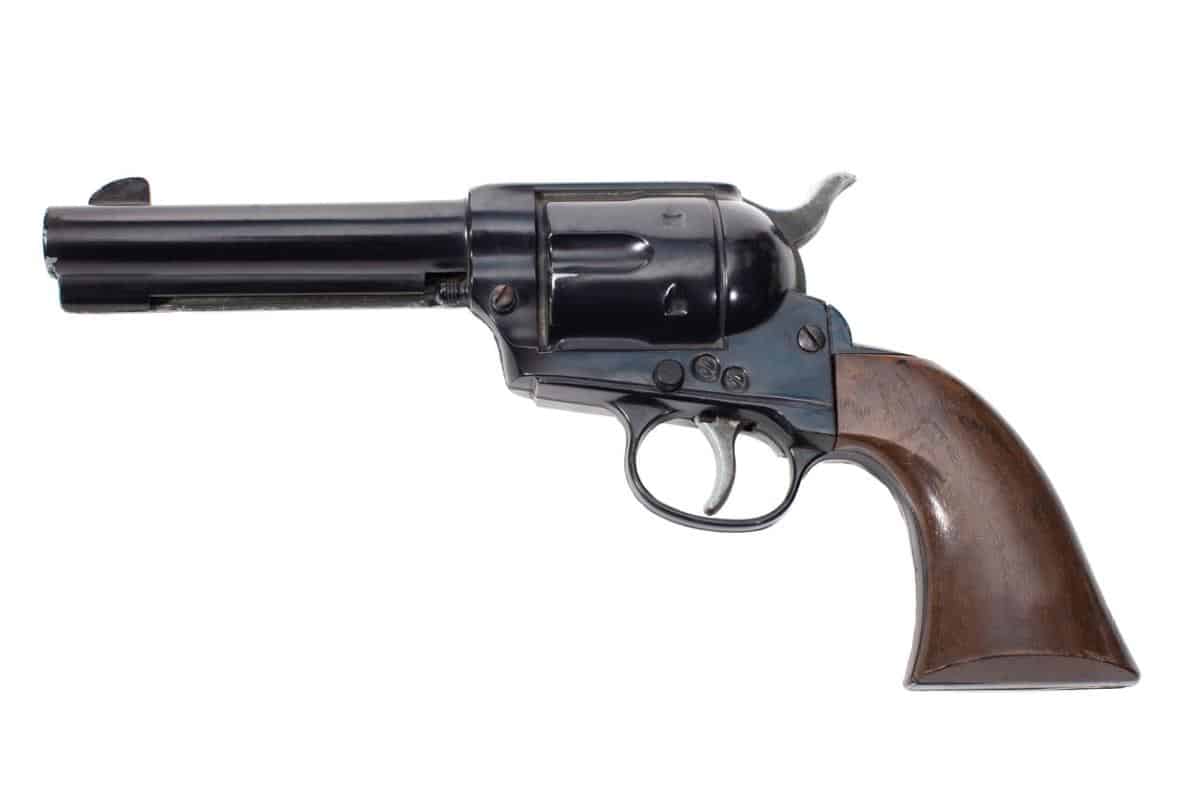Your cart is currently empty!

The Basic Parts of a Handgun
Whether you’re a novice gun enthusiast, a seasoned shooter, or just someone interested in understanding how firearms work, it’s essential to understand the basic parts of a handgun. Knowledge of how this combination of parts come together to form a functional firearm is key to responsible and safe gun use. This article will dive into the main components of a handgun, how handguns and their moving parts have evolved over the years, and why Berry’s is the right partner for all your pistol bullet needs.
Understanding the Main Parts of a Handgun

Every handgun, whether a revolver or a semi-automatic pistol, is a complex assembly of several parts, each playing a critical role in the weapon’s overall operation. To better appreciate the intricate workings of a handgun, we will explore some of these key parts and understand how they contribute to the functionality of the firearm.
1. Barrel and Muzzle: The barrel of a handgun is a crucial part of its design. It is the metal tube through which the bullet travels after being fired. The muzzle is the front part of the barrel from where the bullet exits. The muzzle’s design and finish can significantly affect the accuracy and velocity of the bullet. Certain handguns also offer the option of attaching a suppressor to the muzzle, to reduce the noise and flash created during firing. Not only does the barrel guide the bullet towards the target, but its length and internal design significantly impact the bullet’s speed and accuracy. The barrel’s diameter, also known as the bore, and the presence of rifling — grooves spiraled inside the barrel — influence the muzzle velocity and the stability of the bullet in flight.
2. Trigger and Trigger Guard: The trigger is the lever that the shooter pulls to initiate the firing sequence. The trigger guard is the protective loop surrounding the trigger, designed to prevent accidental discharge. Safety in handling a firearm hinges on responsible trigger use, emphasizing the trigger guard’s importance in overall firearm safety.
3. Firing Mechanism and Firing Pin: The firing mechanism in a handgun acts as the heart of its operations. When the trigger is pulled, it activates the firing mechanism, releasing the firing pin. This pin strikes the cartridge primer, igniting the powder inside the cartridge and propelling the bullet forward. A precise firing mechanism is vital for reliable firearm operations.
4. Rear Sight and Front Sight: The rear and front sights aid in aiming the handgun. The rear sight usually consists of a small notch, while the front sight is a post. By aligning the post within the notch, the shooter can aim the handgun accurately at the target.
5. Pistol Grip: The pistol grip of a handgun serves as the interface between the shooter and the firearm. Designed to be held in the hand, it allows the shooter to control the firearm and absorb the recoil when the gun is fired. An ergonomically designed pistol grip can improve shooting accuracy and comfort.
6. Slide and Slide Lock: In a semi-automatic handgun, the slide is the top portion that moves backward when the gun is fired, ejecting the spent casing and facilitating the loading of a new round from the magazine. The slide lock holds the slide open after the last round has been fired, providing a visual indicator that the handgun is empty.
7. Safety Mechanism: The safety mechanism of a handgun is an essential feature designed to prevent accidental discharges. It can take various forms, such as a lever or button, and its function is to block the trigger or firing mechanism when engaged.
8. Decocking Lever and Takedown Lever: These features are commonly found in semi-automatic pistols. The decocking lever allows the hammer to be safely lowered without discharging a round, while the takedown lever facilitates the disassembly of the firearm for maintenance and cleaning purposes.
9. Recoil Spring: The recoil spring absorbs the force of the slide moving backward after a round is fired and helps push the slide forward to chamber the next round. This spring is an essential part of a semi-automatic handgun’s cycle of operation.
10. Magazine: Found in semi-automatic pistols, the magazine is a removable component that stores and feeds ammunition into the firearm. Depending on the design, a magazine can hold several rounds of ammunition. It’s inserted into the grip of the handgun, and a spring mechanism pushes each round into the firing chamber when the previous one has been fired.
These components and their interaction form the essence of a handgun’s operation. A well-manufactured handgun ensures the seamless function of these parts, contributing to its overall performance and safety. In the following section, we’ll delve deeper into the roles these parts play in the operation of these firearms.
The Evolution of Handguns and Their Parts

From the primitive hand cannons of the Middle Ages to today’s modern semi-automatic handguns, the journey of handguns’ development is a fascinating story of human ingenuity, technological advancements, and societal needs.
PRIMITIVE HANDGUNS
The story of the handgun began in the 14th century with the invention of hand cannons. These rudimentary firearms, essentially a small cannon with a handle, lacked many features of modern handguns. Their operation was based on a simple ignition system, which lit the gunpowder and expelled the single projectile from the metal tube.
THE INVENTION OF REVOLVERS
In the 19th century, the introduction of the revolver marked a significant evolution in handgun design. Samuel Colt patented the first practical revolving firearm, introducing a rotating cylinder to hold multiple rounds. This innovation allowed the user to fire multiple shots without needing to reload after each one. The design of the revolver brought new parts into play, such as the revolving cylinder and the trigger mechanism, which rotated the cylinder and aligned a cartridge with the hammer and barrel.
THE ARRIVAL OF SEMI-AUTOMATIC PISTOLS
At the end of the 19th century, another significant shift in design took place with the introduction of the semi-automatic pistol. This design used the energy from the fired cartridge to cycle the action, eject the spent casing, and load a new round from a detachable magazine. The semi-automatic pistol brought new components such as the slide, the recoil spring, and the magazine into the design of handguns.
MODERN HANDGUNS AND THEIR PARTS
Modern handguns are a culmination of centuries of evolution and refinements. Today’s handguns are composed of several parts, each having a specific function to ensure safe and effective operation. Key components such as the barrel, trigger, firing pin, sights, and various safety mechanisms have been carefully engineered for maximum performance and safety.
Unique Features for Special Applications
Handguns have evolved to cater to specific requirements, from concealed handguns for self-defense, to short-barreled rifles for law enforcement, each having unique features. For example, a decocking lever is a feature found in some modern semi-automatic handguns that allows the hammer to be safely dropped on a loaded chamber, while the takedown lever enables quick disassembly for cleaning and maintenance.
The Berry’s Bullets Difference
Our family-run business has been at the forefront of bullet manufacturing for over 60 years, always focusing on providing superior quality products at affordable prices. Founded by Ray Berry in 1961, we’ve become a household name among shooting enthusiasts and anyone in need of high-quality firearm components.
Our journey began with copper-plated pistol bullets, admired for their accuracy without compromising on affordability. Over time, we expanded our in-house, US-made product range to include ammo boxes, vibratory case cleaning tumblers, media sifters, and even a state-of-the-art VersaCradle™ System of vises and accessories. Today, we stand proud, boasting over 60 types of Superior Plated Bullets and a host of other firearm-related products.
Having Berry’s Bullets by your side means choosing an exceptional level of quality, benefiting from our friendly customer service, and supporting a product base that is proudly made in the USA.
